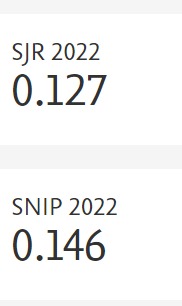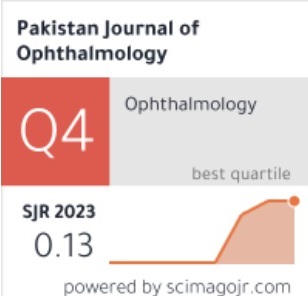Comparison of Sedation Quality and Pain with Propofol-Thiopental Sodium Versus Propofol-Etomidate in Cataract Surgery
Doi: 10.36351/pjo.v40i1.1729
DOI:
https://doi.org/10.36351/pjo.v40i1.1729Abstract
Purpose: To compare the effectiveness of Propofol + Sodium thiopental (Thiofol) versus Propofol + Etomidate (Etofol) in achieving a more favorable sedation during phacoemulsification.
Study Design: Randomized controlled trial.
Methods: A total of 64 patients (25 females and 39 males) were assessed with an average age of 65.14 ± 13.34 years. Patients who underwent elective phacoemulsification operation under sedation and were randomly divided into the Propofol + Sodium thiopental (Thiofol) and Propofol + Etomidate (Etofol) groups. There were 32 patients in each group. Demographic information, sedation level, medical condition, anesthetic complications, hemodynamic parameters prior to, during, and following the operation, and the visual analog scale (VAS) were measured by an anesthesiologist and compared.
Results: The groups showed significant differences in the levels of Ramsay scores (P<0.001). The frequency of Ramsay scores 2 and 3 was 43.75%, 56.25%, and 0%, 100% in Etofol, and Thiofol groups, respectively. The average recovery time showed a significant increase in the Etofol group compared to the Thiofol group (P<0.001); the VAS in the Thiofol group showed a significant rise compared to the Etofol group (P <0.001).
Conclusions: Although the sedation quality while phacoemulsification cataract surgery was acceptable with both drugs and the results between groups were not significantly different considering recovery time and pain control, recovery time was less in Etofol and pain control was more effective in Thiofol.
Downloads
Published
How to Cite
Issue
Section
License
Copyright (c) 2023 Behzad Nazemroaya, Hamidreza Shetabi , Darush Moradi Farsani, Ali Ariya

This work is licensed under a Creative Commons Attribution-NonCommercial 4.0 International License.






